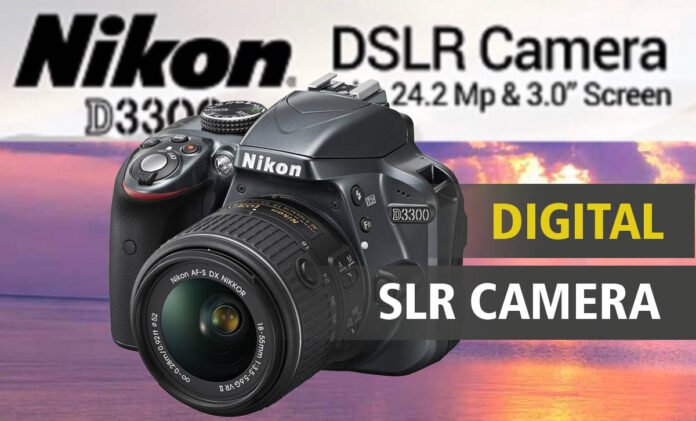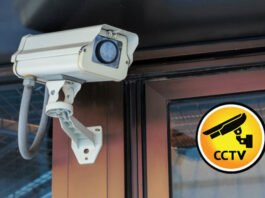With nearly a century of experience producing optical lenses, cameras, and other instruments; Nikon ranks alongside Canon as one of the two major companies in the optical goods market today. The D3300 DSLR camera is one of the premium offerings of the D-series and as such, represents an attempt to synthesize many of the top-end features into an entry-level camera without creating an overly complex user setup, also. Indeed, the company claims that the combination of ease of use and features such as a large image sensor, Expeed 4 image processor, a range of shooting modes and a light and compact body make the D3300 a great buy for beginners who wish to gradually take full control of the various facets involved in taking a high-quality shot.
Technical Specifications of Nikon D3300
- 2MP CMOS Sensor with Expeed 4 Processing
- ISO range of 100 to 12800, can be up to 25600
- 11AF points and 5 frames/second continuous shooting
- 1080 HD video recording with a maximum frame rate of 24fps
- The 3-inch backlit LCD monitor has about 921,000 dots for precise image reproduction
- Easy operation with 2 dials – release mode dial and photography mode dial
- Wi-Fi enabled with a separate adapter for fast transfer of data
- Supports both RAW and JPEG image formats.
Setting Up the Nikon D3300

True to its claim that the Nikon D3300 is a device even for a beginner; Nikon has provided pretty much everything you need to start shooting. Camera body, standard AF lens (M5A78L-M/USB3), strap, viewfinder support and a huge 500+ pages manual; that many users noted provides much more information than the average manual would. To start, you need to put all the parts together.
Getting Started
- The camera body comes with an eyelet on the left side; (when facing the back of the camera) through which the included strap can pass to secure it. Many users recommended starting with this step; since the battery and other heavy components/attachments are not yet present inside/on the camera and manipulating the body is easier.
- Take the included battery and insert it into a powerpoint. Take the battery and insert it into the adapter. Complete the operation by securing the latch on the adapter. Charging should take about 2 ½ hours to complete if the battery is completely empty.
- While the manual suggests otherwise; many users preferred to attach the lens to the camera while waiting for the battery to charge. To attach the lens:
- Remove the lens cover attached to the body.
- Take out the lens and figure out the exact initial orientation. Getting the orientation wrong can lead to damage and poor photography. To this end, there is a “mounting mark” on the lens that should match the mark on the side of the lens orifice when the lens has initially been inserted.
Part 2
- Insert the lens and rotate it.
- When it “clicks” the lens locks in place.
- Take the battery and memory card and insert them into the spring-operated compartment located on one side of the device.
- Press the power switch located on the top right side of the camera and wait till the Nikon logo appears.
- Decide which interface language you will use and choose the date and time to display on the camera.
Note:
- Never insert the battery into the AC adapter before inserting it into the powerpoint.
- Some users warned that the AC adapter is not free as part of the package and must purchase it separately. Further, the adapter comes with a plugin in some regions and a cable in others.
Basic Operations and Photography
Many users like the Nikon D3300 cause it is a small and light product in comparison to competitors like the Canon 70D. Using just the rotating dials and buttons makes this a great choice for those who have little idea about the nitty-gritty of DSLR photography. If you are one such person, your work can be simplified even further by following the steps below:
STEPS
- Assuming that you set up the camera (see steps above) and has been turned on, you should find yourself with default controls. Shortly, these are – auto scene mode, auto exposure compensation, and ISO and auto shutter speed.
- To change the scene mode, you must locate a large dial on the top left of the camera body.
- Slightly below the dial would be a small black knob. Press it to “unlock” the dial and once done, press it again to lock the dial. Some users found this option useful for preventing accidental mode modification, while others considered this more of a gimmick.
- On the dial are a number of modes like S, P, A, M, Auto, etc. By default, the mode is Auto. Choose the mode of your choice (for deciding which mode to use, check out our guide to DSLR lenses).
- Raise the camera to your eyes. The left hand should be partially under the camera and partially under the lens. The right hand should grip the handgrip on the right tightly.
Part Two
- Look into the viewfinder and adjust the camera till you have the subject in your focus. By “in your focus” we mean that the entire subject is within the AF brackets that you see in the viewfinder.
- Secondly, use your thumb to find the shutter release button on the right side of the camera. Press it halfway and note how the camera focuses on the subject.
- Press the button completely to take a picture.
- If you take your eyes off the viewfinder now, you will notice that a small LED on the side of the machine has lit up. This is the SD card LED and it indicates that the SD card is in use. In this case, the LED lights up because the photo saves to the SD card.
- The display (not the viewfinder) will show the image for a few seconds. Thereafter it will revert to showing whatever the viewfinder is catching at that moment.
- If you wish to see the photo again, look for the small playback button above the top left corner of the display. Clicking it will bring up the most recent photo and the SD card number will display below the image.
- Note the circular wheel on the right of the display. Pressing the left or right sides of the wheel makes it possible to cycle through images and choose which ones to edit/delete.
- If you wish to delete any images, press the trash bin icon beside the playback icon. A dialog box will pop up asking you to confirm whether you wish to have the photo removed. Pressing the trash bin icon again deletes the photo.
Notes:
The Nikon D3300 has 2 SD card slots. You can use the second SD card as a backup card that would be used only if the first “Overflows”. Alternatively, you may choose which card to use as the default card.
Never remove the battery or SD cards from the camera during operation as this may permanently damage the battery and/or SD cards.
Advanced Controls and Scene Modes
Once you have figured out the basic photography procedures, you would probably want to delve deeper and try some of the more advanced methods using the steps given in the detailed product manual. Below we shall study the utility and efficacy of some of the common scene modes and controls.
Low light photography – With ISO capabilities extending up to 12800, the D3300 easily beats the likes of Canon D70 in terms of low light performance. While some users noted that it doesn’t do as well as the D5300 or D5500 due to the presence of a weaker bundled lens and sensor, the price difference allows the D3300 to reign in its own price bracket. One user even claimed to have shot a non-lighted part of his home with the extended shutter duration and just ISO 100 and achieved results comparable with those under normal lighting.
RAW and JPEG Imaging – Users had compared the product to the D5200 model and said that while the JPEG imaging of the latter was better. Finally, RAW results were almost similar. The JPEG quality was better than Canon however and some users think that this can be because the image compression by Nikon is superior to Canon.
Zoom
Megapixels and Zoom – Many users were initially afraid that the 24.2MP sensor would cause the images to come out poorly as the excessive number of pixels would mean less light for each pixel (since the exposure, shutter speed and sensor quality levels were the same). However, software enhancements meant that the images appeared far more natural even when digitally zoomed to the highest extent.
Optical zoom capabilities of the stock lens proved less impressive as many users warned that an 18-200mm lens with zoom capabilities would have to be obtained for truly breathtaking results. However, they agree that the stock zoom is good enough for beginners to start with DSLR photography.
3 of the Main Settings
- Video Capture – Video capture is as “smooth and glassy” by many users and some compared them to professional devices like the Sony HX-300 to conclude that the performance of the D3300 was quite impressive. However, when the camera is on the move continuously and is in autofocus mode. The focus motor inside the camera produces sufficient noise and you can hear it by the microphone. You can avoid it by either using an external mic or using manual focus.
2. Flash – The unit comes with a special flash shoe that can hold a dedicated flash. Users were not very happy with the light distribution of the inbuilt flash, arguing that it produced harsh tones. With detachable flashes, however, results were vastly better.
3. Modifiable Display Angles – If you detach the display, the angle can rotate to suit the angle at which you take the picture. This is useful in circumstances where the camera needs to be high above the photographer’s head or very near the ground.
With the light distribution of the inbuilt flash, arguing that it produced harsh tones. With detachable flashes, however, results are great.
Modifiable Display Angles – Modifiable display angles are possible if you detach the fixed display. Also, the display angle can rotate to suit the angle at which you take the picture. This helps in circumstances where the camera needs to be high above the photographer’s head or very near the ground.
Warranty
The camera Nikon D3300 and all accessories except the lens come with 1 year limited Nikon warranty. Of course, you can extend it by purchasing the two-year Extended Service Coverage (ESC) anytime within the original one year warranty period. NIKKOR lenses, including the one provided as part of the package, come with a one year warranty and a free four-year ESC. This ESC must avail of within the warranty period by sending the included form to the company.
✓ Pros of Nikon D3300
- Light and compact body make for stress-free photography.
- 2MP camera sensor provides sufficiently large images.
- RAW imaging and JPEG compression technology produce amazing image files.
- The partially detachable display allows for easier viewing in special circumstances.
- Low light photography is comparable to much costlier models.
- Dual SD cards option allows you to storage many photographs while on the move.
- Smooth video capture with little to no blurring while rapid camera movement
- Decent warranty provided for all parts and accessories.
[-] Cons
- Focus motor sound recorded by the inbuilt mic.
- No low pass filter in the sensor (for advanced photography)
- Inbuilt flash is somewhat harsh.
Conclusion
While the Nikon D3300 does provide some disappointments when it comes to the quality of the flash. And the more advanced photography features, it is important to remember that the unit is to provide a basic DSLR experience at a competitive price. Not only does the camera manage to do so with aplomb, but it also exceeds many expectations by offering a remarkably good lens and sensor combination, a great viewfinder, simple controls in a light body and a display that is maneuverable without being bulky. Lastly, considering these and the warranty, it would not be wrong to consider the D3300 one of the crown contenders for the position of the best budget DSLR in the market in 2015.




